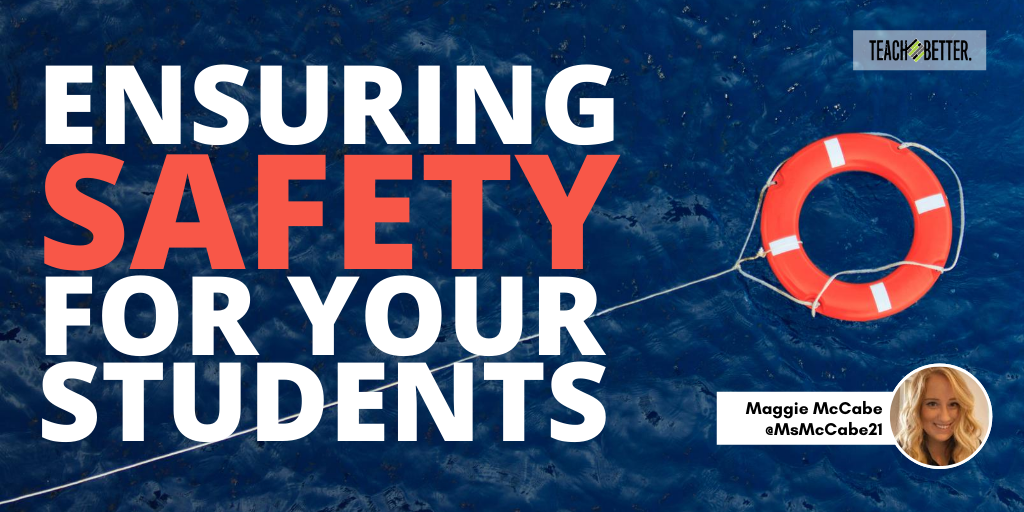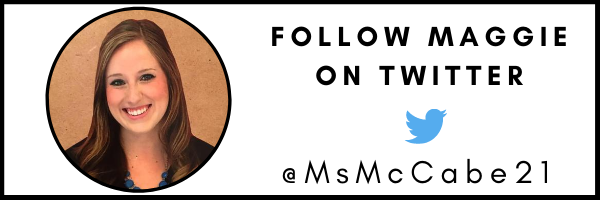TL;DR:
- The pandemic has caused many challenges, making safety an issue for students in impoverished areas.
- Ensuring safety for our students is a necessary foundation for anything else we want to accomplish with them.
It has been several months since we’ve been able to greet our students as they walk through our classroom doors. I think we can all agree that our feelings have been on a pendulum swing since March. We’ve been thrilled to have a well-deserved break, overwhelmed with the transition to remote learning, happy to spend time with our family, and nervous about the health and safety of the people we care about. In school and other places of work, there are various things that one can implement to help protect the safety of individuals within the building – Click Here to see about things like first aid kits.
Ultimately, we’ve all thought about how detrimental this has to be to the well-being of our students.
We eagerly awaited warm weather, sunshine, long nights, and vacations, but not like that.
For most of us, especially those of us who teach in impoverished districts, summer break naturally brings mixed feelings.
We get to feel excited about all the adventures that await us, but we worry our students now do not have access to consistent meals, consistent compassion and care, or consistent safety.
Our classrooms are built on safety; they offer a space for children to let their guard down, be themselves, fear nothing, and know that they are in good hands. Some schools have even adopted gun safety protocols for preventing gun violence. Teaching students about emergency lockdown drills, installing bullet resistant glass for windows and doors are some of the methods adopted. School, unfortunately for some, might be the only place where a student can feel these things and have a sense of safety. This year, like most, they expected to feel that way for a total of around 180 days, but that was unexpectedly not the case.
We can’t change the fact that a pandemic reared its ugly head. We also can’t change the ways in which it impacted our students all over the world.
Growth is impossible if we cannot accept our biases and the ways in which we act upon them. Click To TweetOf course, every teacher faces the hard truth that they may lose a student on their class roster throughout their career. However, for teachers that educate within urban populations, impoverished areas, neighborhoods with high crime, and areas that breed gang violence, summer always accompanies the feeling of dread. It’s a shame because gang violence is usually situations of blackmailed crimes and in cases like this otherwise good youngsters get dragged into something they can’t get out of. Sometimes they can get a harrisburg criminal defense lawyer or similar to help them get a lesser sentence and give them a second chance at life. Sometimes kids are naïve and do bad things to protect themselves, and this is also why there is a lot of pressure on teachers to guide them away from this.
Yes, we all need a break, but would I push through more long days if it meant that I knew the chances of my students remaining safe increased tremendously? Absolutely.
I have taught for 4 years now, and lost a total of 3 students.
I lost two students to gun violence and one to other circumstances. It never gets easier. We have strict gun laws (https://gunlawsuits.org/gun-laws/states-with-strictest-gun-laws/), but it is not enough to combat the problem. As a teacher, I have often felt helpless, yet I struggle the situation in my own way. You don’t “become numb” to the death of your students and you shouldn’t have to. They say that students struggle to develop a connection with adults or positive peers because they are afraid to lose them. They are conditioned to believe that everyone leaves.
I would argue that it is sometimes even more difficult to develop connections with students knowing something tragic may happen to them.
And this is exactly why we need to develop connections with them, every moment of every day.
I teach Alternative Education in a high school designed for students who have struggled academically and behaviorally and require an alternative delivery of instruction.
Alternative Programs are hard for a variety of reasons.
I have the same students all day, every day and generally, they are with me for several years.
With that being said, I often see them more than their own families do. Our classroom develops into a family; it kind of comes as second nature. We have hit rock bottom together and we have been on top of the world together.
Considering I have a tendency to accumulate students in my program that come from a very unsettling past with a very unsettling future, I run the risk of losing more students than the average teacher.
Generally speaking, the students that get placed in my room are the students that pose a more perceived “threat” to the general student population. These are the students that find themselves completely lost and falling more and more into the cracks of our educational system, and generally, that feeling of loss carries out of the school building and onto the streets.
My students often seek connection, family, and friendship through the gangs in their neighborhoods. They crave the unusual feeling of “success” wherever they can get it.
Unfortunately, that sometimes means bringing in the most money after drug sales, being a loyal member of the gang, outrunning the law, and dodging death.
In my classroom, I fight every day to facilitate the feelings of family, the feelings of success, the feelings of safety, and the feelings of connection in a way that they have never experienced.
As crazy as this sounds, as a teacher it is often easier to “turn off” our attention to the things that hurt than it is to face them and embrace them.
We can knowingly welcome a student into our classrooms with the knowledge of the gang they represent, the activities they participate in outside of school, and the businesses they may run. But most teachers can and will turn the other cheek, teach their lesson, and head home to their families. They put that knowledge and fear behind them for another day.
Unfortunately, I find it incredibly difficult to turn those fears off. I know my students like the back of my hand. I know which of them have fathers at home, which of them have a criminal record, which of them have been shot before, and which of them don’t have food to eat tonight.
And, I know their parents and siblings just as well. I know where they live, what neighborhood, and if those neighborhoods are crime-ridden. I usually know what sets them off, and who their close friends are. What makes them light up and put away their “survivor” brains for brief moments and allow themselves the opportunity to be a child. I know their fears. And I know their insecurities.
So, knowing all of this and more, how can I turn off the thoughts that I may not see one of them the next year, or even the next day?
Yes, I have heard, “you can’t save them all.” And yes, I have been told I put too much of my time into ensuring their safety and well-being.
How can you not? I am not trying to save them from themselves or alter their future on my own. I am simply trying to keep them safe and use my time and resources to help them have another day to create their own futures.
Teaching in Decatur has been one of the most challenging, yet life-altering experiences for me. Growing up in the Chicago Suburbs, I experienced little diversity, little poverty, and little violence.
Here, I have serviced mostly students living in single-parent homes, poverty, and in bad neighborhoods, and students that look nothing like me.
I stepped as far out of my comfort zone as I could go, but I don’t know how much further there is. When I find it, I will go for it.
I have had the white-teacher-fail moments more times than I can count. I’ve sat in front of students and told them that they need to try harder to get themselves out of gangs.
I have given a kid without a school uniform a hard time (when they didn’t have a working washer and their uniform reeked). I’ve addressed misbehavior with consequences and asked questions later, or sometimes never at all. And I have judged parents and their ability to raise their child.
If we’re being honest with ourselves, we all have done it. However, growth is impossible if we cannot accept our biases and the ways in which we act upon them. My students have taught me the struggles of their upbringings and the cycles that steal away their futures. They have been open-minded and eager to learn of my upbringing and my lack of knowledge, given theirs.
We have all become so comfortable with one another and without judgment, that sometimes people from the outside looking in have a hard time understanding the dynamics of my classroom. I often get things like: You spoil them. Aren’t they bad kids? Shouldn’t your room be stricter? Or your class has to be too easy for them to be as successful as they are.
To those I say: You’re absolutely, positively, one-hundred-percent WRONG. My students have FINALLY gotten a taste of success, a taste of belonging, a taste of hope, and a taste of safety. And they are taking full advantage with or without your judgments.
[scroll down to keep reading]
So, with all this in mind, how do I let those precious children walk out of my door again and again just to navigate the dangers of their everyday life?
I have yet to figure out how to emotionally manage that and when I do, I will let you all know. In the meantime, I will continue to try to equip them with experiences outside of their norms, and a better understanding of their strengths and areas of needs.
Once this pandemic is over, they know they have a place they can always come back to in order to feel that connection and a place they can feel safe.
Here’s to the teachers that brace themselves every evening, every weekend, every holiday, and every long break. May you find opportunities to have hope, to breathe, and to reflect on the many ways you can continue to learn from your students and educate them on ways to access safety.
About Maggie McCabe
Maggie McCabe is currently a special education cross-categorical teacher at Highland Park High School. She began her teaching career at HPHS in the Fall of 2020 & started her career at MacArthur High School as a special education alternative teacher (behavioral/social emotional) in Decatur, IL where she ran that program for 4 years before relocating back to the Chicagoland area.
In her free time, she is heavily involved in organizations fighting for social justice. She loves spending her time searching for unique coffee shops and enjoys podcasts and documentaries. Her favorite part of teaching is showing even some of the most closed-off children, who don’t feel that they belong in the public education system, that they indeed do. She is motivated by the goal of finding strategies, developing interest-based curriculum, and building relationships in order to ensure that their perception of their role in education changes entirely. Every year, she feels she has met her goal when each student feels that school is a place they are safe, cared for, and can thrive in.



